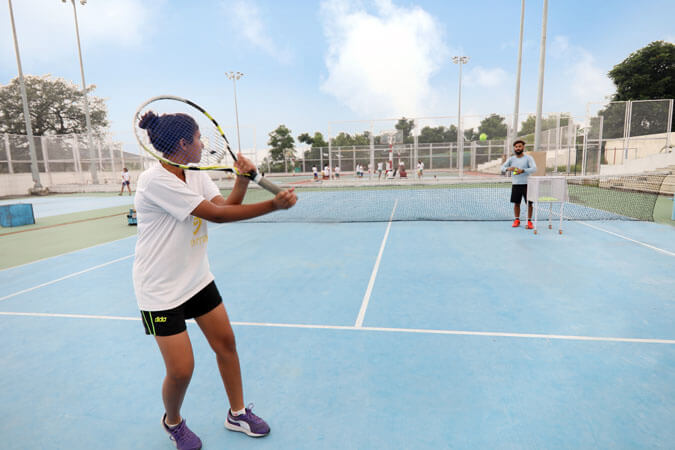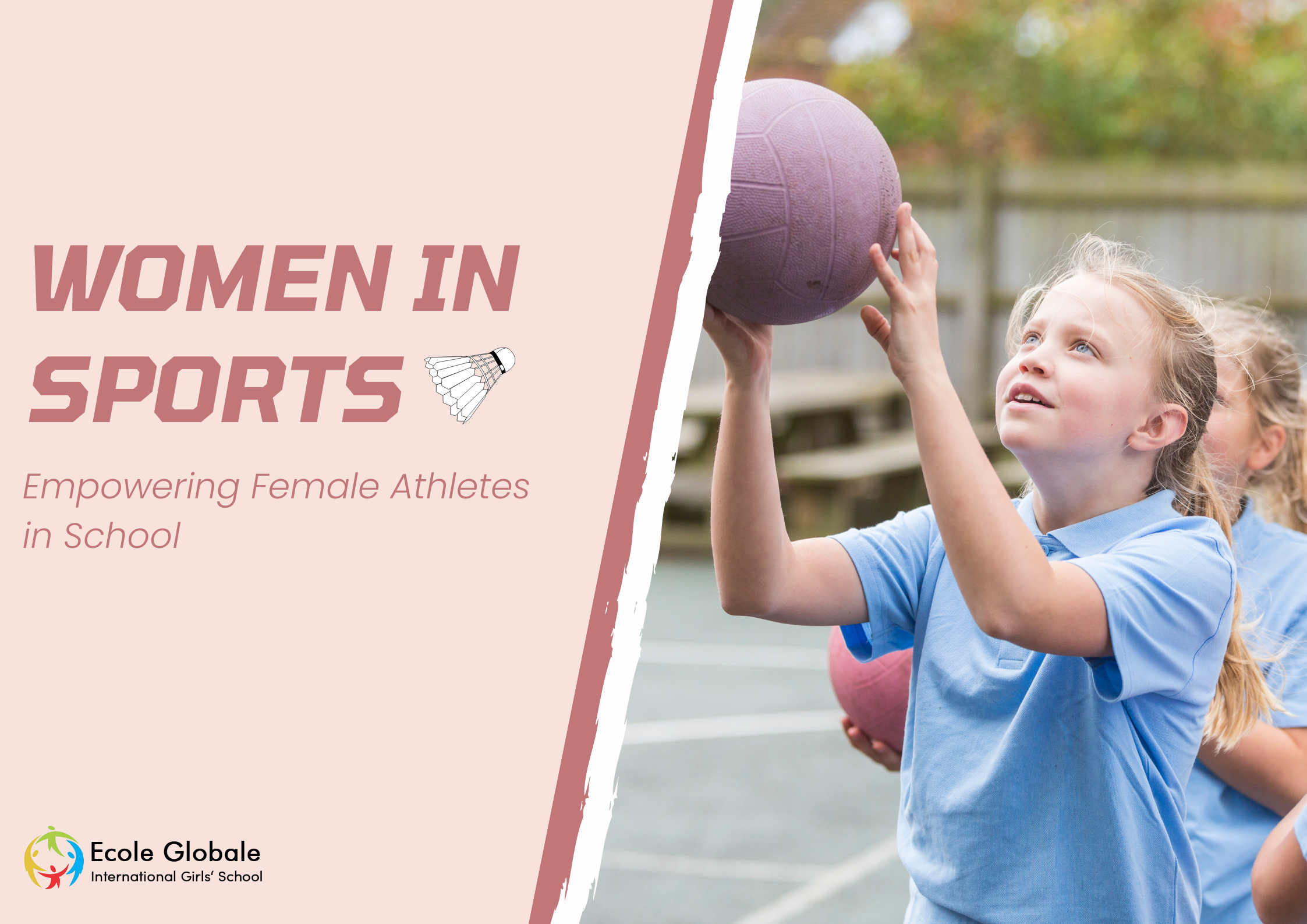The Significance of Women in Sports

In recent years, there has been a growing recognition of the importance of women in the realm of sports. Historically, sports have been largely dominated by male athletes, with female participation facing numerous challenges.
However, the landscape is gradually changing, and acknowledging the significance of women in sports is crucial for fostering equality and providing opportunities for female athletes.
Historical Challenges Faced by Women in Sports

Throughout history, female athletes have encountered various obstacles, ranging from societal expectations to discriminatory policies. The prevalent notion that sports are primarily for men has hindered the development of women’s sports.
Understanding these historical challenges is essential for appreciating the progress that has been made and recognizing the work that still needs to be done.
Importance of Empowering Female Athletes in School Sports

The empowerment of women in sports in school sports goes beyond merely promoting physical activity among girls. It is about breaking down gender barriers, challenging stereotypes, and fostering an environment where female students can thrive athletically.
Empowerment in school sports sets the foundation for a more inclusive and equitable society, encouraging young girls to pursue their athletic passions without fear of prejudice.
The Evolution of Women in Sports

Overview of Historical Progress
Women’s participation in sports has undergone a significant evolution over the years. In the early 20th century, societal norms often discouraged women from engaging in competitive sports.
However, as the century progressed, gradual shifts in attitudes and values led to increased recognition of female athletes and their contributions to the sporting world.
Key Milestones and Achievements
Milestones such as the establishment of women’s sports organizations and the inclusion of female events in major sporting competitions have marked significant strides in promoting gender equality.
The recognition of women’s sports achievements on the global stage has not only shattered stereotypes but has also inspired countless young girls to pursue their athletic ambitions.
Impact of Title IX
The enactment of Title IX in the United States in 1972 was a pivotal moment for women’s sports. This legislation prohibited sex-based discrimination in federally funded education programs and paved the way for increased opportunities for female athletes in schools and colleges. The impact of Title IX extends beyond the U.S., influencing global efforts to promote gender equality in sports.
Benefits of Sports for Female Students

Physical Health and Well-being
Participation in sports offers numerous physical health benefits for female students. Regular physical activity helps in maintaining a healthy weight, improving cardiovascular health, and reducing the risk of chronic diseases.
Encouraging girls to engage in sports at a young age establishes healthy lifestyle habits that can last a lifetime.
Emotional and Mental Health Benefits
Beyond the physical advantages, sports contribute significantly to the emotional and mental well-being of female students. Physical activity releases endorphins, which can alleviate stress and anxiety.
Moreover, being part of a team fosters a sense of belonging and camaraderie, positively impacting mental health.
Development of Leadership and Teamwork Skills
Participation in team sports provides opportunities for the development of leadership and teamwork skills. Female students engaged in sports learn how to collaborate, communicate effectively, and navigate challenges as a team.
These skills are transferable to various aspects of life, contributing to personal and professional growth.
Academic Performance and Time Management
Contrary to the misconception that sports may detract from academic pursuits, studies suggest that student-athletes often exhibit better academic performance.
Engaging in sports helps students develop effective time management skills, as they learn to balance their academic responsibilities with training and competition schedules.
Challenges Faced by Female Athletes in School

Gender Stereotypes and Societal Expectations
Despite the progress in women’s sports, gender stereotypes and societal expectations continue to pose challenges for female athletes. Stereotypes often portray female athletes as less competent or less dedicated than their male counterparts, perpetuating bias and limiting opportunities for women in sports.
Limited Opportunities and Resources
In many educational institutions, women in sports still face limited opportunities compared to their male counterparts. This can manifest in unequal access to sports facilities, fewer scholarships, and less visibility for women’s sports programs. Addressing these disparities is crucial for creating a level playing field for all student-athletes.
Unequal Treatment in Sports Programs
Unequal treatment within sports programs, such as disparities in coaching quality, equipment, and funding, can hinder the development of female athletes.
Eliminating such inequalities requires a concerted effort from educational institutions to prioritize gender equity and ensure that female athletes receive the same support and resources as their male counterparts.
Strategies for Empowering Female Athletes in School

Promoting Awareness and Education on Gender Equality
Raising awareness about gender equality in sports is a fundamental step in empowering women in sports. Educational institutions can implement programs that educate students, teachers, and administrators about the importance of equal opportunities in sports and challenge ingrained stereotypes.
Providing Equal Access to Sports Facilities and Resources
Ensuring equal access to sports facilities, equipment, and resources is crucial for empowering female athletes. Schools should invest in facilities that cater to the needs of both male and female athletes and allocate resources fairly to promote an inclusive and supportive environment.
Creating Mentorship Programs for Female Athletes
Mentorship programs can play a pivotal role in empowering female athletes. Pairing aspiring women in sports with experienced mentors can provide guidance, support, and valuable insights into navigating the challenges of being a woman in sports.
Mentorship fosters a sense of community and empowers young girls to pursue their athletic goals with confidence.
Encouraging Positive Role Models in Women’s Sports
Highlighting positive role models in women’s sports is essential for inspiring the next generation of female athletes. Celebrating the achievements of successful women in sports, whether as athletes, coaches, or administrators, reinforces the message that talent knows no gender and that women can excel in any sporting discipline.
The Role of Schools and Educational Institutions

Implementing Inclusive Sports Programs
Educational institutions should actively work towards implementing inclusive sports programs that cater to the diverse interests and abilities of all students.
This involves offering a variety of sports options and ensuring that both male and female athletes receive equal opportunities to participate and compete.
Fostering a Culture of Equality and Respect
Creating a culture of equality and respect within schools is fundamental for empowering female athletes. This includes promoting a zero-tolerance policy for gender-based discrimination, fostering an environment where all students feel valued, and emphasizing the importance of fair treatment in sports programs.
Collaborating with Local Communities and Sports Organizations
Schools can enhance their efforts by collaborating with local communities and sports organizations. Establishing partnerships can provide additional resources, expertise, and opportunities for women in sports.
Community engagement also helps in creating a broader support network for female athletes, encouraging their active participation in sports.
Overcoming Barriers and Moving Forward

Addressing Remaining Challenges and Barriers
Recognizing and addressing the remaining challenges and barriers is crucial for sustained progress. This involves continuous assessment of sports programs, policies, and attitudes within educational institutions to identify and eliminate any lingering gender-based biases or disparities.
Advocating for Policy Changes
Advocating for policy changes at the institutional and governmental levels is essential for promoting gender equality in sports. This may include pushing for policies that ensure equal funding, opportunities, and treatment for women in sports.
Legislative measures can contribute to creating a more equitable playing field in school sports.
Encouraging Continued Support
Ongoing support from schools, parents, and communities is vital for the continued empowerment of women in sports. Encouraging parents to support their daughters’ involvement in sports, fostering community awareness, and engaging with stakeholders to champion gender equality initiatives are essential steps in sustaining progress.
Conclusion
Reinforce the Importance of Empowering Female Athletes
The importance of empowering women in sports cannot be overstated. By breaking down barriers and creating an inclusive environment, educational institutions play a pivotal role in shaping the future of women in sports.
The positive impact of empowering female athletes resonates not only in their athletic achievements but also in their personal and professional lives.









